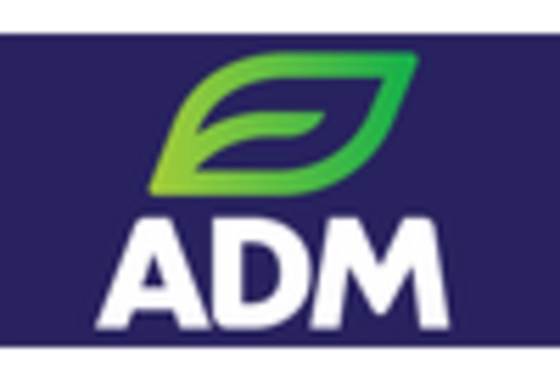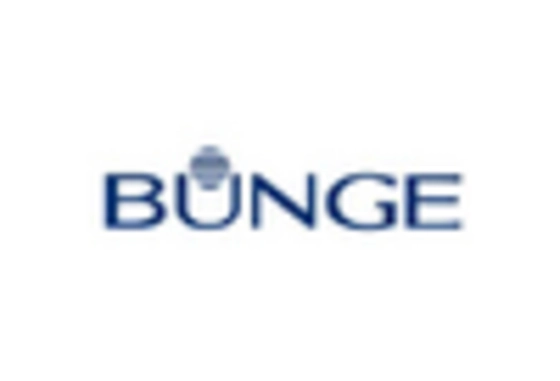Expansion of Export Markets
The expansion of export markets for durum wheat is a critical driver for the Durum Market. Countries with a strong agricultural base are increasingly looking to export durum wheat to meet the demands of international markets. Recent trade data reveals that durum wheat exports have grown by 12% in the last year, driven by rising demand from countries that rely on imported wheat for their food supply. This trend not only enhances the profitability of durum wheat producers but also strengthens the overall Durum Market by creating new opportunities for growth and investment in production capabilities.
Increased Focus on Food Security
The heightened emphasis on food security is shaping the dynamics of the Durum Market. Governments and organizations are prioritizing the cultivation of staple crops, including durum wheat, to ensure a stable food supply. This focus is particularly relevant in regions prone to food shortages, where durum wheat serves as a vital source of nutrition. Recent initiatives aimed at boosting local production have led to increased investments in durum wheat farming, which is expected to enhance the resilience of the Durum Market. As food security remains a pressing global issue, the demand for durum wheat is likely to continue its upward trajectory.
Rising Demand for Whole Grain Products
The increasing consumer preference for whole grain products is a notable driver in the Durum Market. Whole grain durum wheat is recognized for its nutritional benefits, including higher fiber content and essential vitamins. This trend aligns with the broader health-conscious movement, where consumers are actively seeking healthier food options. According to recent data, the demand for whole grain pasta, which predominantly uses durum wheat, has surged by approximately 15% over the past year. This shift in consumer behavior is likely to propel the growth of the Durum Market, as manufacturers adapt their offerings to meet these evolving preferences.
Growing Popularity of Mediterranean Diet
The Mediterranean diet, characterized by its emphasis on whole grains, legumes, and healthy fats, is gaining traction among health-conscious consumers. This dietary trend is particularly beneficial for the Durum Market, as durum wheat is a staple ingredient in many Mediterranean dishes, including pasta and couscous. The increasing awareness of the health benefits associated with this diet has led to a notable rise in the consumption of durum wheat products. Market analysis suggests that the demand for pasta made from durum wheat has increased by approximately 10% in recent years, indicating a robust growth trajectory for the Durum Market as more consumers adopt this lifestyle.
Technological Advancements in Agriculture
Technological innovations in agricultural practices are significantly influencing the Durum Market. The adoption of precision farming techniques, such as GPS-guided equipment and data analytics, enhances crop yields and quality. These advancements allow farmers to optimize their use of resources, thereby increasing the efficiency of durum wheat production. Recent statistics indicate that the implementation of such technologies has led to a 20% increase in durum wheat yields in certain regions. As these practices become more widespread, they are expected to bolster the overall productivity of the Durum Market, ensuring a steady supply to meet rising consumer demands.


















Leave a Comment